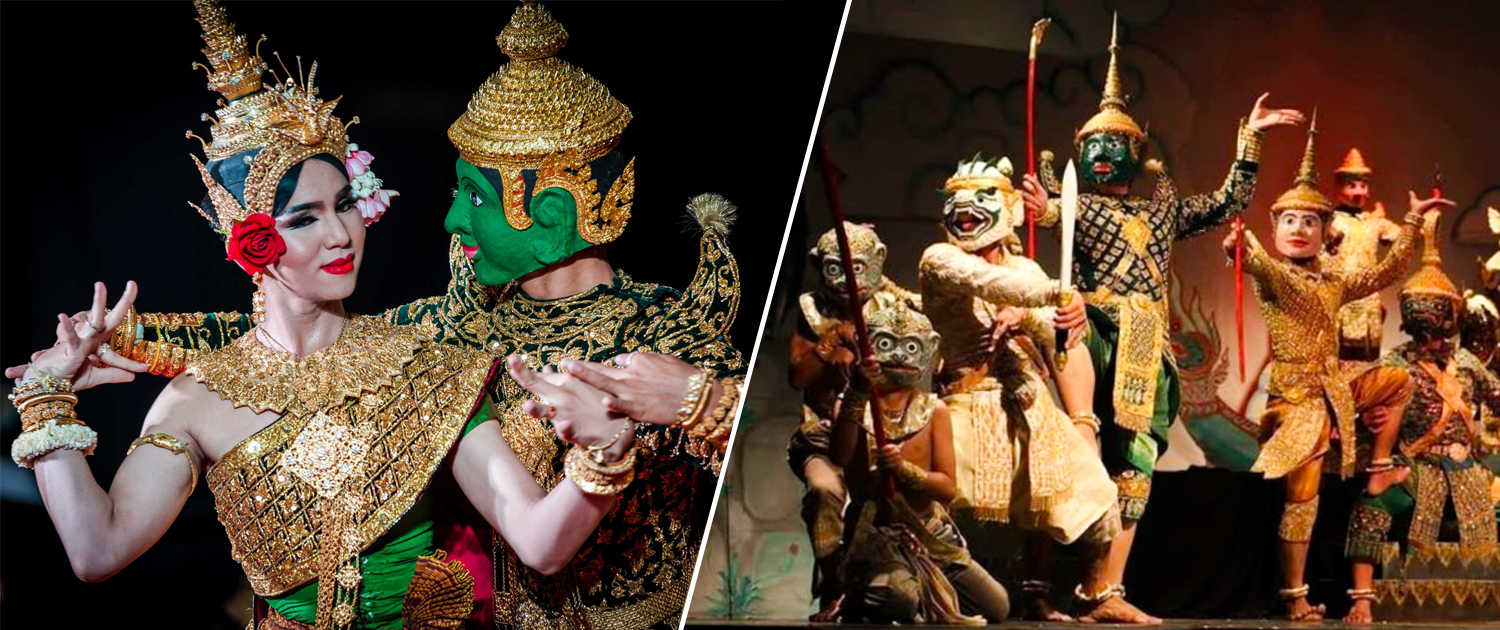Khmer classical dance includes also the Lakhon Khol, a traditional Mask theatre having its origins from the Angkor period. From inscriptions left at the Sambor Prei Kuk temple in Kampong Thom, it is believed to have begun sometime in the 10th century during the reign of King Jayavarman V.
The Lakhon Khol theatre is a sacred dance form with religious values depicting the Reamker, a Cambodian epic poem based on the Sanskrit’s Ramayana epic. Performers put on masks to assume the characters in the poem.
The earliest mention of this epic’s manuscript in Cambodia dates back to the 7th century as revealed by the Veal Kantel inscriptions found in Stueng Treng province while the earliest record of the mask dance is believed to have begun in the 10th century during the reign of King Jayavarman V, according to an inscription at Sambor Prei Kuk temple in Kampong Thom province.
Reamker adapts the Hindu ideas to Buddhist themes and shows the balance of good and evil in the world and has become the mainstay of the royal ballet’s repertoire. Classics like Robam Hanuman and Sovann Maccha are also derived from the Reamker,
Lakhon Khol Characters are portrayed through 4 colour mask forms; green for Rama, a majour deity and the central figure of the ancient epic; yellow for Lakshmana, the younger brother who assists in rescuing Sita from Ravana, the red one, and white for Hanuman, commander of the monkeys.
The Lakhon Khol Wat Svay Andet” theatre plays for the divinities of divisions, such as Reamker and some other things.” Later, there was a Giant with Hanuman statue iconic Lakhon Khol In Phnom Penh in 1954, after independence from France, but the statue lost and instead the Chuon Nath statue still remains.
Another specific story of the theatrical performance is the Reamker, the Khmer legend of the Ramayana. The performance includes an introduction to storytellers who play an important role in the performance and classical music of the Pin Peat

